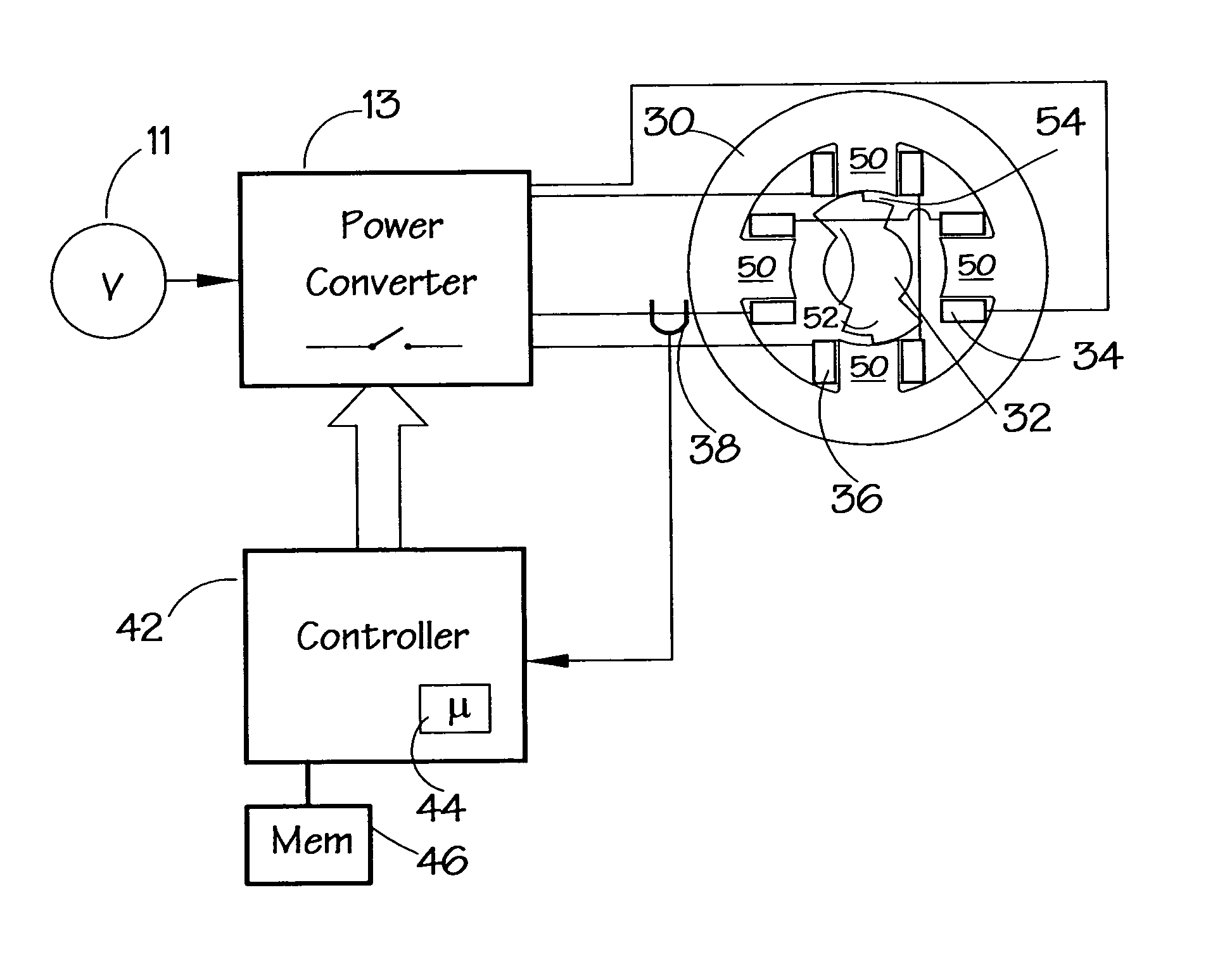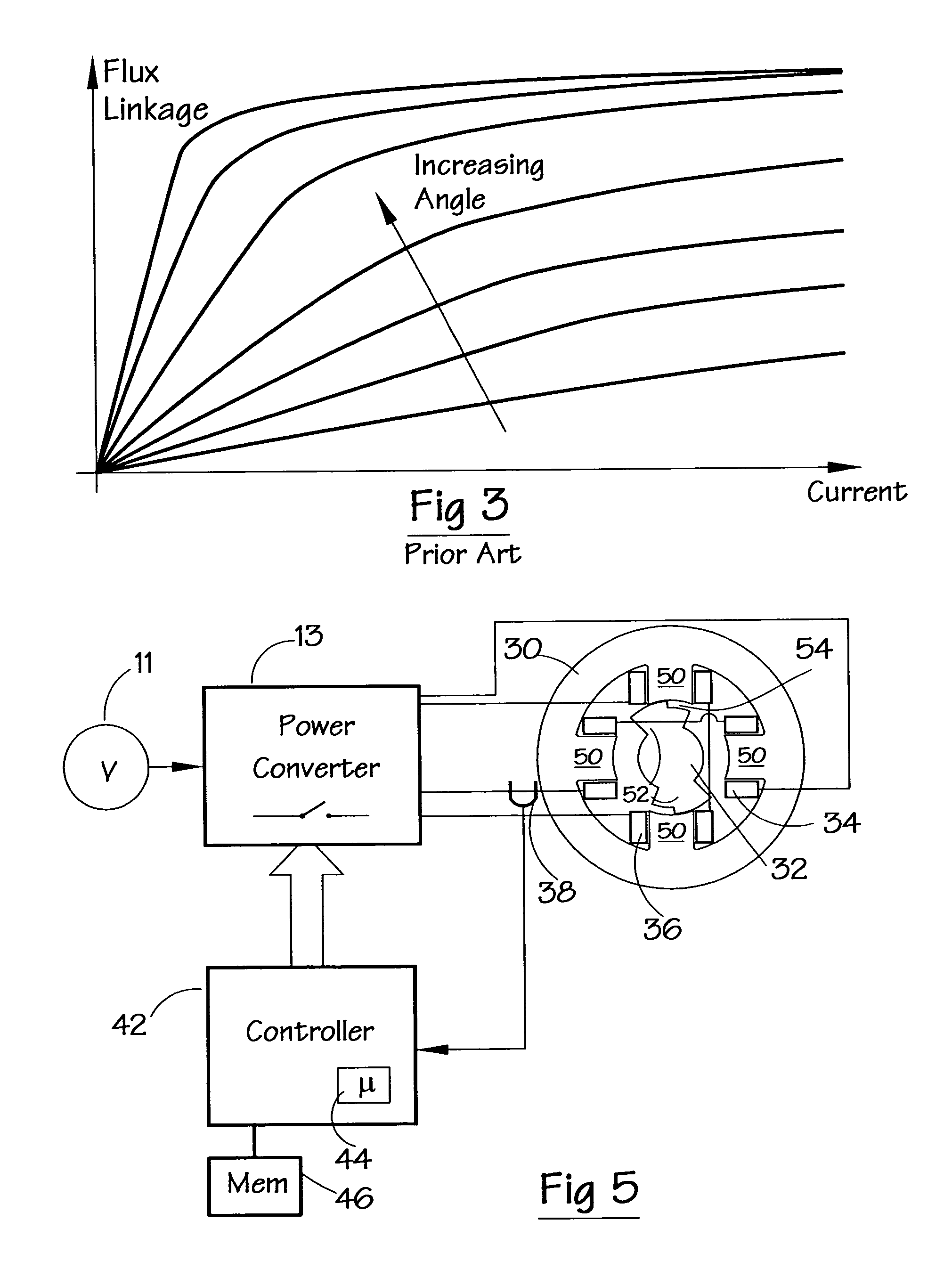Rotor position determination in a switched reluctance machine
a reluctance machine and rotor technology, applied in the direction of synchronous motor starters, electronic commutators, converting sensor output, etc., can solve the problems of increasing the overall assembly cost, adding extra electrical connections to the machine, and potential sources of unreliability
- Summary
- Abstract
- Description
- Claims
- Application Information
AI Technical Summary
Benefits of technology
Problems solved by technology
Method used
Image
Examples
Embodiment Construction
[0035]The illustrative embodiment to be described uses a 2-phase switched reluctance drive in the motoring mode, but any phase number could be used, with the drive in either motoring or generating mode.
[0036]FIG. 5 shows a system for implementing the method in which one form of the invention is embodied. In this, a power converter 13, which is optionally the same as that shown in FIG. 1, is provided for controlling the switched reluctance machine. Controlling the converter 13 is a controller 42, which in this embodiment incorporates a processor, particularly a digital signal processor 44, e.g. one from the Analog Devices 2181 family, and associated program and data memory 46. Alternative embodiments incorporate a microprocessor or other form of programmable device known in the art. The processor runs according to the program code stored in the memory 46 to execute the method embodiments of the present invention. The illustrated 2-phase machine has a stator 30 and a rotor 32. The sta...
PUM
 Login to View More
Login to View More Abstract
Description
Claims
Application Information
 Login to View More
Login to View More - R&D
- Intellectual Property
- Life Sciences
- Materials
- Tech Scout
- Unparalleled Data Quality
- Higher Quality Content
- 60% Fewer Hallucinations
Browse by: Latest US Patents, China's latest patents, Technical Efficacy Thesaurus, Application Domain, Technology Topic, Popular Technical Reports.
© 2025 PatSnap. All rights reserved.Legal|Privacy policy|Modern Slavery Act Transparency Statement|Sitemap|About US| Contact US: help@patsnap.com



